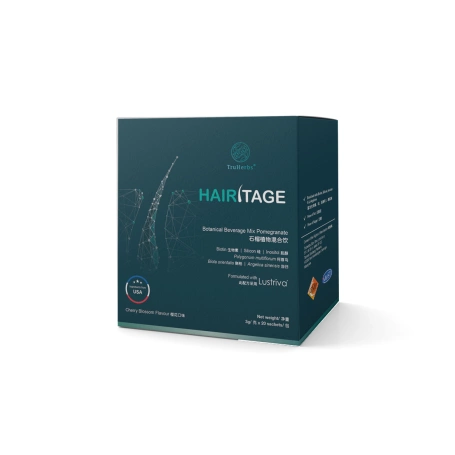Balding Must-Know: The Four Hair Growth Phases

Hair is not only an external part of our appearance but also a reflection of our overall health. However, many people struggle with balding or hair loss, which can affect both their appearance and self-esteem. Understanding the basic principles of hair growth, particularly the four main growth phases, is crucial in preventing and treating balding.
This article will delve into the four phases of hair growth, describe each phase’s characteristics and function, and explain how balding is related to these cycles. We will also discuss how to promote a healthy hair growth cycle through proper care and treatments, helping you address the challenges of balding more effectively.
The Four Hair Growth Phases
Hair growth is not a continuous process but a cyclical one that occurs in four distinct phases: the Anagen (growth) phase, the Catagen (transition) phase, the Telogen (resting) phase, and the Exogen (shedding) phase. Each strand of hair goes through different phases at different times, ensuring that the hair maintains its overall density and growth.
1. Anagen (Growth) Phase
The Anagen phase is the first and longest phase in the hair growth cycle, lasting between 2 to 6 years. During this time, hair follicles are actively dividing and producing new cells, pushing hair to grow. On average, hair grows about 1 centimeter per month during this phase, and the length of the Anagen phase determines how long the hair can grow.
Under normal conditions, about 90% of the hair is in the Anagen phase at any given time. When this phase is shortened or prematurely ends, it can lead to thinner or shorter hair, which could be an early sign of balding.
2. Catagen (Transition) Phase
The Catagen phase is the transition period between active growth and rest, lasting approximately 2 to 3 weeks. During this stage, hair follicles stop dividing, and the hair shaft separates from the follicle. The hair no longer grows but remains anchored in the scalp.
By the end of the Catagen phase, the hair is ready to enter the Telogen phase. Only about 1% of hair is in this phase at any given time.
3. Telogen (Resting) Phase
The Telogen phase lasts for around 3 to 4 months and is the resting phase of the hair growth cycle. During this period, hair follicles remain inactive, and the hair stays rooted in the scalp without growing. Approximately 10% to 15% of hair is in the Telogen phase at any given time.
While it may seem like no changes are happening during this phase, the body is preparing for new hair growth. When new hair begins to grow, it pushes the old hair out, signaling the start of the Exogen phase.
4. Exogen (Shedding) Phase
The Exogen phase is the final stage where hair naturally sheds, usually around 50 to 100 hairs per day. This is part of the normal hair renewal process, with new hair starting to grow from the follicle as old hair falls out.
However, if a large amount of hair sheds in a short period or the Anagen phase shortens, this can lead to thinning hair and balding.
The Relationship Between Balding and Hair Growth Cycles
Balding typically occurs when the hair growth cycles are disrupted or when hair follicles shrink. Whether it’s male pattern baldness (androgenetic alopecia) or female pattern hair loss, the issue often stems from:
- Shortened Anagen Phase: If the Anagen phase is shortened, hair cannot reach its full length, leading to thinner and weaker hair over time.
- Prolonged Telogen Phase: When the Telogen phase is extended, hair follicles become inactive for a longer period, resulting in less overall hair growth.
- Follicle Shrinking: Hormonal imbalances, especially excess androgens, can cause hair follicles to shrink, producing finer hair or no hair at all, ultimately leading to bald patches.
How to Promote a Healthy Hair Growth Cycle
To maintain a healthy hair growth cycle and prevent balding, several important steps can be taken:
1. Maintain a Healthy Diet
Diet plays a critical role in supporting healthy hair growth. A balanced diet rich in proteins, vitamins, and minerals provides the necessary nutrients for hair follicles. Key nutrients like zinc, iron, vitamins A, C, and E, and omega-3 fatty acids can significantly improve hair growth.
2. Manage Stress Levels
Excessive stress can trigger hair follicles to prematurely enter the Telogen phase, leading to sudden hair loss. Effective stress management techniques, such as meditation, regular exercise, and sufficient sleep, can reduce the negative impact of stress on hair growth.
3. Keep Your Scalp Healthy
A healthy scalp is the foundation for healthy hair growth. Regularly cleanse your scalp to remove excess oils and ensure proper blood circulation. Healthy blood flow is essential for delivering nutrients to the hair follicles.
4. Use Gentle Hair Care Products
Choose shampoos and hair care products that are gentle on your scalp and free of harsh chemicals. This helps avoid irritation and damage to the hair follicles, allowing them to function optimally.
5. Seek Professional Treatment
If you are experiencing significant hair loss or balding, consult a dermatologist or a licensed Traditional Chinese Medicine (TCM) practitioner for personalized treatment. Combining modern Western treatments with TCM therapies, such as herbal remedies and acupuncture, can significantly improve hair health and promote regrowth.
Hair Care and Treatment Methods
Depending on the type and severity of hair loss, various hair care and treatment options are available:
1. Medication
Medications like minoxidil and finasteride are commonly used to treat hair loss. These drugs stimulate hair follicle activity, extending the Anagen phase and promoting hair growth.
2. TCM Herbal Treatments
In TCM, hair loss is often linked to internal imbalances such as kidney deficiency or qi and blood stagnation. Herbal formulas that nourish the kidneys and improve blood circulation can be used to address the root cause of hair loss, restoring healthy hair growth.
3. Acupuncture and Scalp Massage
Acupuncture can stimulate specific points on the scalp to enhance blood flow to the hair follicles, while scalp massages help relax the muscles and encourage hair growth.
4. Low-Level Laser Therapy (LLLT)
LLLT is a non-invasive treatment that uses specific wavelengths of light to stimulate hair follicles, extend the growth phase, and encourage hair regeneration.
5. Hair Transplant Surgery
For those with severe balding, hair transplant surgery offers a permanent solution. Healthy hair follicles from one part of the scalp are transplanted to balding areas, allowing for natural hair growth.

TruHerbs Hairitage Herbal Hair Drink
For individuals seeking a natural solution to restore hair health, TruHerbs Hairitage Herbal Hair Drink is a recommended product. This herbal drink combines the power of traditional Chinese herbs to nourish the body from within, revitalizing hair follicles and promoting healthy hair regrowth.
Key Features of TruHerbs Hairitage Herbal Hair Drink:
- Made with all-natural herbal ingredients, free of harmful chemicals.
- Includes herbs that tonify the kidneys and improve blood circulation, which are key to resolving hair loss issues.
- Enhances follicle activity, prolonging the Anagen phase and reducing hair loss.
- Rich in vitamins and minerals that help improve scalp blood flow and support healthy hair growth.
Many users of TruHerbs Hairitage Herbal Hair Drink have reported thicker, healthier hair after consistent use. As a safe and effective natural remedy, it provides hope for those struggling with hair loss.
5 Common Questions
1. What are the four hair growth phases?
The four hair growth phases are the Anagen (growth), Catagen (transition), Telogen (resting), and Exogen (shedding) phases. These cycles ensure the continuous renewal and growth of hair.
2. What are the characteristics and roles of each phase?
The Anagen phase is the active growth phase, the Catagen phase is the transition stage, the Telogen phase is the resting period, and the Exogen phase is when old hair sheds and new hair begins to grow.
3. How is balding related to the hair growth cycle?
Balding occurs when the growth cycle is disrupted, leading to a shortened Anagen phase, a prolonged Telogen phase, or follicle shrinkage, all of which result in thinning or lost hair.
4. How can I promote healthy hair throughout each growth phase?
Maintaining a balanced diet, reducing stress, keeping the scalp healthy, using gentle hair care products, and seeking professional treatment can all help promote a healthy hair growth cycle.
5. What hair care and treatment methods can improve balding?
Treatment options include medications like minoxidil, TCM herbal remedies, acupuncture, laser therapy, and hair transplant surgery.
Conclusion
Understanding the four phases of hair growth and how they relate to balding is essential in taking preventive and corrective measures. By adopting healthy lifestyle habits, using the right hair care products, and seeking appropriate treatments, it’s possible to extend the Anagen phase, reduce hair loss, and promote hair regrowth.
If you’re experiencing hair loss, consult a professional early to find the most suitable treatment plan for your needs. With the right care, you can restore your hair’s health and density effectively.

 Bahasa melayu
Bahasa melayu 中文
中文























